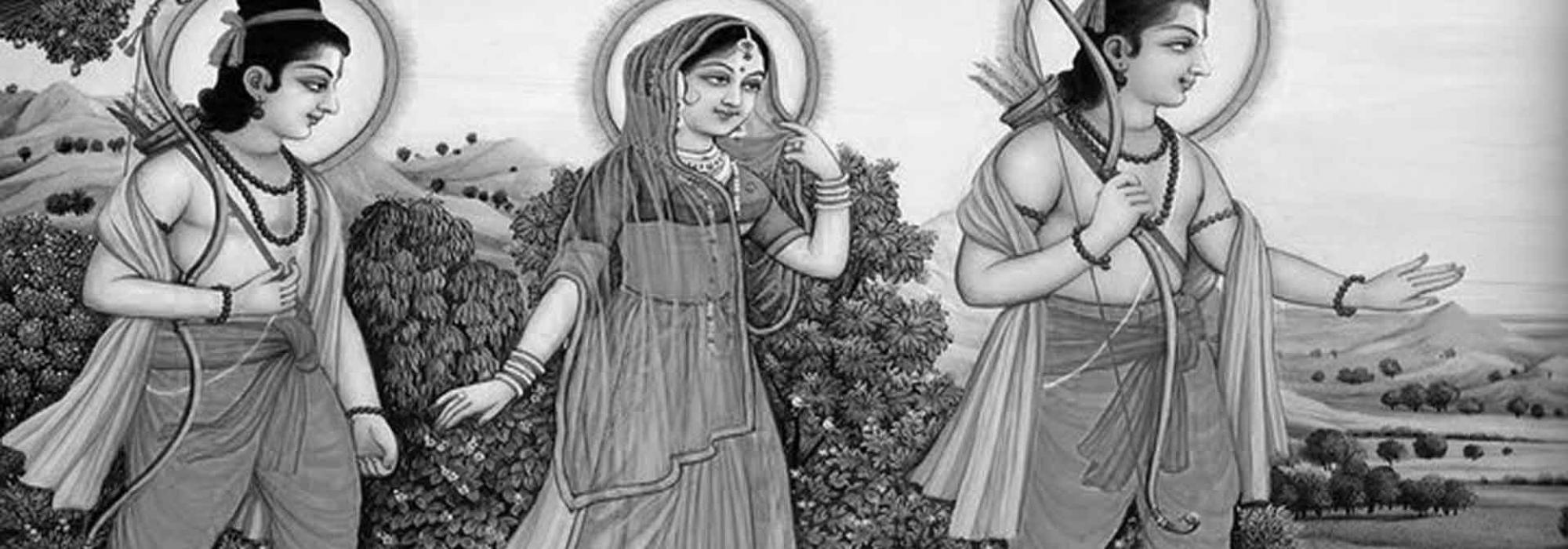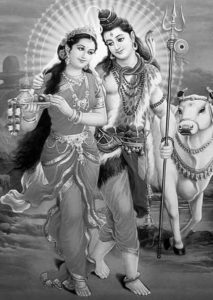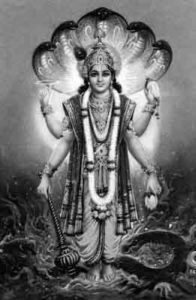A Tragic Episode
At the time of my grandfather’s death, Sri Venkatarama Bhatta was among the four or five other people—including my father and younger grandfather—who wept intensely. Although he was eminently qualified as a Purohita to carry out the post-death ceremonies, he refused. He said that it was simply impossible for him, that he was incapable of repeating the words, “Chechanna is dead,” as part the ceremonial rites. Accordingly, he requested Vedamurti Shyama Bhatta to perform the obsequies. For the rites that began on the Seventh Day till the Thirteenth, he sent for Sripati Bhatta from the Hebbani village. He stood at the forefront and personally supervised every single detail of the rites.
Akin to Rishi Vasistha
Sri Venkatarama Bhatta was worshiped by everyone in our town. People from all Varnas held a sense of deep Bhakti towards him. Those who are known as Antyajas would not only share their trials and tribulations with him but would get dates and auspicious hours fixed for various ceremonies in their respective families. Even Muslims had reverence towards him.
Sri Venkatarama Bhatta’s abiding faith in tradition, his conduct, and his inner peace attracted friendship and respect from all people. Every single person I knew regarded him as the contemporary Vasistha Maharshi.
On the day of the Umamaheshwara festival that is celebrated around Deepavali, his home would metamorphose into a fair. People from all Varnas and communities would visit his home, offer Puja to Umamaheshwara and take Prasada. Numerous delicacies offered as Naivedya on the occasion would form a heap rising up to the knee—a sight that I’ve witnessed with my own eyes. All children of our town would gorge on it to their hearts’ content.
There were about eight or ten houses that followed the dance and drama profession. All of them regarded Sri Venkatarama Bhatta as their Guru and would visit his home and get the Gejje Puja [literally: Anklet Puja done when a new dancer is initiated into dance training] done by his hands. On his part, Sri Venkatarama Bhatta regarded himself as the Purohita of everyone.
Ramayana Discourse
The picture of the ecstasy that I felt on the day that Sri Venkatarama Bhatta delivered the Ramayana discourse to my father has still remained fresh and vivid in my mind. It was the Vijayadashami festival. My grandfather had arrived from Kolar. He was keen that his son embark on the Ramayana Parayana (devotional recitation of the Ramayana). His younger brother shared the same enthusiasm.
They decorated the house with Rangoli and buntings. Five or six Vaidika Brahmanas and auspicious women had also assembled. And it began at about nine in the morning: Puja, Panchamruta Rudra Abhishekam, Sahasranama, Kumkuma Archanam, Mahamangalarati, and Mantrapushpam. Once all this was finished Sri Venkatarama Bhatta began the Ramayana discourse[i]:
Koojantham Rama Rameti…
Valmiki giri sambhootha…
Vedavedye pare pumsi…
Vaidehisahitam…
Sri Venkatarama Bhatta split the words of these prefatory verses, chanting them loudly and then instructed my father to repeat each verse twice. Then:
Tapasswaadhyaayaniratam…
One who is constantly engaged in Tapas and self-study.
Sri Venkatarama Bhatta recited this summarized portion and made his disciple recite it.
It was lunchtime by the time this was over. Holige (a sweet delicacy) and Kheer had been cooked. Puja and Kumkuma Archana once again that night. Special Puja and Ramayana Parayana took place the next day as well.
This sort of Puja and related celebrations were a frequent occurrence in Mulabagal. A towering scholar named Sri Venkatarama Sastri [this is a different person] would systematically perform the Sri Rama Festival (Ramanavami) every year. I have written about him elsewhere. Various auspicious celebrations would take place in the homes of Madhva Pandits. All communities including the Vaishyas would perform the Sri Rama festival.
Sri Venkatarama Bhatta passed away perhaps in 1907—08.
The Conviction of the Vaidikas
I haven’t set out to narrate some fantastic or otherworldly tale by recounting the episode of Sri Venkatarama Bhatta and people made of his fabric. The life and lifestyle of such people was typical for the time. Back then, such Vaidika families were not rare. In numerous places such as Kolar, Srinivasapura, Chikkaballapura, and even in smaller villages, it was commonplace to find such Vaidika families. Now—that is, since the last fifty or sixty years, such families are dwindling in numbers. The characteristic and defining features of the society of the old are now being erased.
My intent is to give a brief picture of these features as much as possible. The chief hallmarks of such a lifestyle are three: (1) Conviction (2) Contentment (3) Affection.
They had an abiding conviction in something called God, Punya and Papa, Swarga and Naraka. This conviction was deep and intense. It’s because of this conviction that they experienced a tranquil contentment in their life. It’s because of this that they didn’t hanker after anything. The extremes of attachment and jealousy were alien to them. They had the inner strength to bear and digest pain and difficulties. Because they weren’t easily agitated, it was possible for them to remain happy with whatever minuscule earnings they got and with whatever little possessions they owned. It was the joy from contentment.
Affection for the World
Because they had resolute conviction in the kingdom of Ishwara, because they had contentment in their minds, it became easy for these people to behave with genuine affection towards the world. They didn’t feel envious when a bounty of wealth landed in a neighbour’s house. “If God is compassionate, perhaps even we’d get some wealth. God’s compassion is paramount. That’s why they became wealthy. Let’s be happy.” If misery struck the neighbor, they would say, “Ayyo! That’s the consequence of some wrongdoing. Indeed, even we are not immune to it. As much as possible, let’s try to lighten their misery.”
This is true affection towards the world. This affection ensues from largeness of the heart. Largeness of heart ensues from contentment. Contentment ensues when faith becomes an absolute conviction.
This picture emerges from an honest perusal and study of the life and lifestyle that existed fifty or sixty years ago.
In this era of motors and atoms, in the perennial haste and rush of contemporary life, in the battle of leading our lives today, in the empty noise, in today’s worship of the face-powder and the toothbrush, if we recall the fact that there was once a recent period of simple tranquility, we might glean at least some contours of the nature of this tranquility. This is my only desire.
Yatha vrukshasya sampushpitasya dooraadgandho vaatyevam
punyasya karmano dooraadgandho vaati|| [ii]
Just as the fragrance emanating from the flowers of a tree reaches far and wide even to people who haven’t seen the tree, so do the virtues and good deeds done for the welfare of the world by wise people and sages spread everywhere.
Concluded
This is the fifth and concluding part of the English translation of the second chapter of D V Gundappa’s Jnapakachitrashaale – Vol. 5 titled "Vaidikadharma Sampradayastharu."
Notes
[i] Initiation into the study of Ramayana typically begins with this verse. Traditionally, the Ramayana Parayana is begun with the Sundara Kanda portion of the epic.
[ii] Mahanarayana Upanishad 11.1
















































